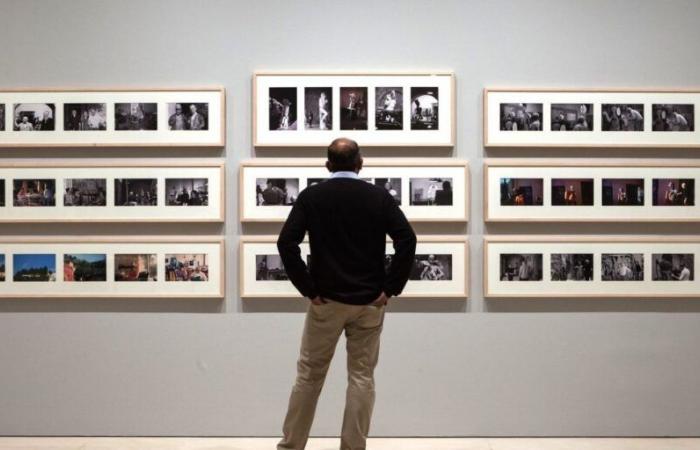A new international study led by researchers from the University of Vienna (Austria) has shown that the simple fact of contemplate visual artvisiting a museum or having art in the hospital room can increase well -being, Especially repeated commitment, which can increase the meaning we give to life.
This systematic review, conducted by researchers from Austria, Ireland, Germany, the United Kingdom and the Netherlands and published in The Journal of Positive Psychologyit is the first to exhaustively evaluates how, when and why The contemplation of works of art favors mental health.
In recent decades, the idea that arts can contribute to mental health has gained strength. While artistic creation has been considered beneficial for emotional and psychological well -being for a long time, the effects of simple contemplation of works have been greatly without exploring. The findings To date were scattered and inconsistentand few studies examined the conditions in which to see artistic works can be effective.
The new review synthesized the data of 38 studies with 6,805 participants, with the aim of determining not only if the contemplation of works of art improves well -being, but also when, under what conditions already through which psychological processes do it. These 38 studies, published between 2000 and 2023, were extracted from four large databases.
The researchers found the greatest evidence of benefits in eudemonic well -being: a sense of meaning, purpose and personal development. “People usually think that art is a luxury, but our results suggest that Participate in artistic activitieseither as part of the hobbies or through a specific intervention, It can contribute significantly to well -being –Mackenzie Trupp, principal author and researcher at the University of Vienna and the Institute where UMC Radboud. This opens exciting possibilities to integrate the artistic in everyday environments and public health strategies. “
The contemplation of works of art for well -being can Take place in very diverse contexts: from museums and hospitals to online rooms and platforms. Revised studies included both unique exhibitions and longer programs with multiple sessions. The participants carried out various activities, such as individual viewers, guided sessions and reflection tasks, such as writing a newspaper, qualifying emotions or discussing.
Many interventions combined the viewing of works of art with the so -called ‘Accessory Activities’, such as guided reflection or creative exercises. Reflection strategies were the most used and can play a fundamental role in achieving positive effects.
Although previous studies pointed to benefits such as Improvement of mood or stress reduction, the field lacked synthesis and conceptual clarity.
The researchers identified five psychological mechanisms that help explain how the contemplation of works favors well -being. Affective mechanisms include Emotional regulation and the experience of pleasuretriggered by aesthetic responses.
Cognitive mechanisms have to do with attention, memory and learning: art can incite reflection or stimulate curiosity. Social mechanisms describe how Shared artistic experiences encourage connection and reduce feelings of isolation. Autotransformative mechanisms allow personal reflection, the reinforcement of the identity and the meaning of life.
Finally, resilience reinforcement mechanisms favor emotional coping and restoration, especially in clinical or very stressful environments. Together, these mechanisms offer valuable information for future research and help design more effective interventions based on artistic.
To help standardize and improve future studies in this field, the authors developed the guidelines for the presentation of reports on receptive artistic activity (Receptive Art Activity Research Reporting Guidelines, Raarar), a new set of criteria to ensure that future interventions and research can be compared, evaluated and reproduced better.
Although the benefits of creating art are well documented, this study highlights the unimportant potential to consider it as an resource for well -being.
Since art is already present in public and private spaces, researchers recommend that it could be used more intentionally as an accessible and low -cost mental health tool. Thus, they encourage politicians, educators and health professionals to Take into account these conclusions when designing future spaces and programs. The RAARAR guidelines will also contribute to the investigation being more rigorous and reproducible in the future.






